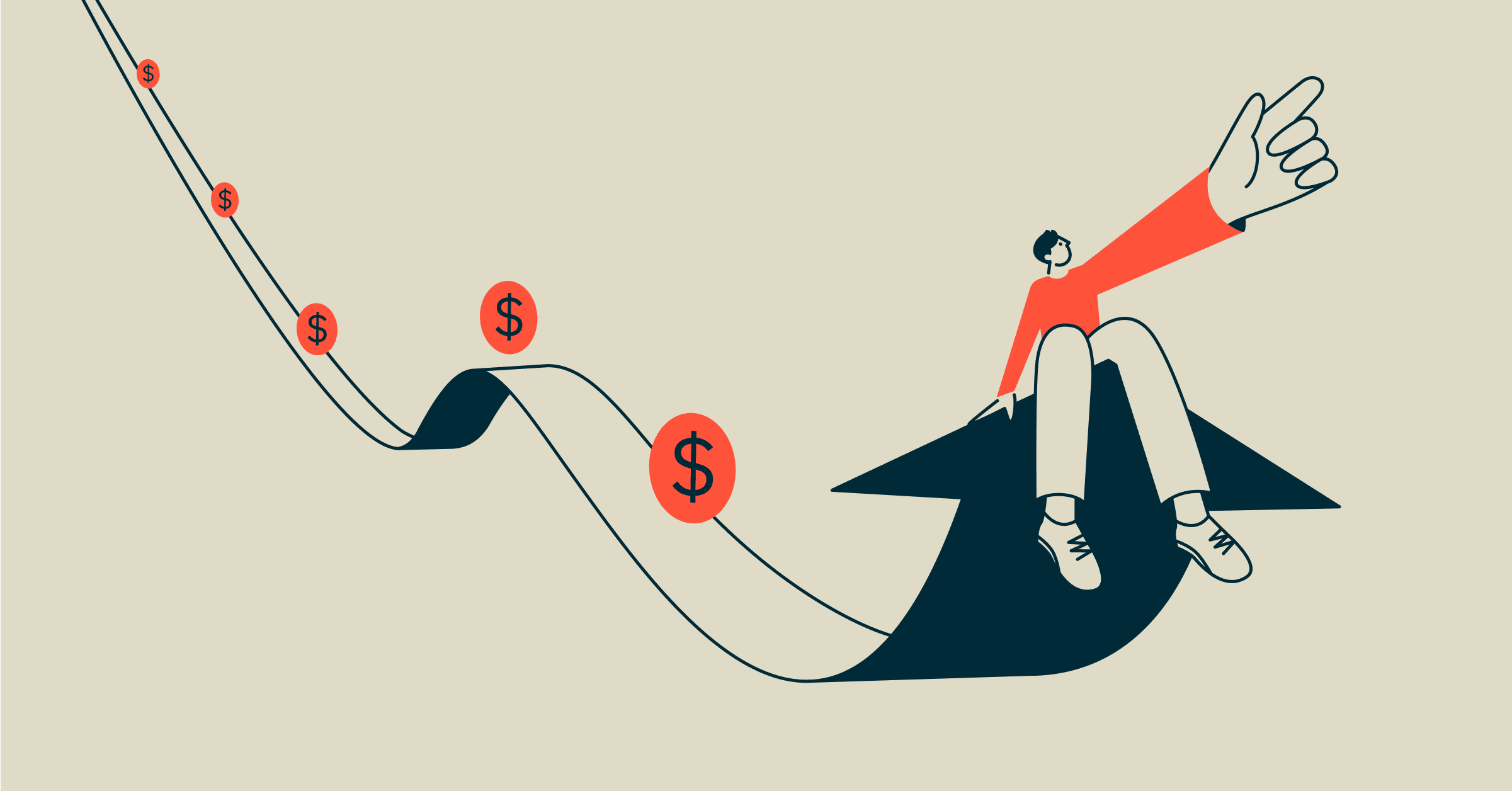The past couple of years has been a financial rollercoaster for all businesses worldwide. After surviving a pandemic-led slowdown followed by a strong recovery period, only to face the threat of a recession in 2023 has naturally left business leaders on tenterhooks. With macro factors remaining unpredictable and capital becoming scarce, organizations are rallying their initiatives to prioritize monetization and cash flow to battle the upcoming downturn and cash crunch.
According to the OpenView 2022 SaaS Benchmarks report, companies with less than one year of runway are cutting the same amount as companies with 25+ months of runway. While a healthy cash runway is prudent even during a growth market, in 2023, with capital becoming increasingly expensive, it’s now a business survival factor.
Extending your cash runway is not just cutting down on non-essential expenditures but a strategic exercise. In times of uncertainty, having a strong financial position allows you to pursue long-term growth opportunities that put you ahead of the competition. So you want to trim the excess without cutting into your revenue engines that fuel sustainable growth.
The 5-Step Process to Extend Your Cash Runway
There are two aspects to extending the cash runway of a company and they are,
- Cash conservation
- Customer retention
Let us look at how we can maintain this balance and perform 5 steps that would extend your company’s cash runway,
Step 1# Reduce cash burn
Step 2 # Plug Revenue Leakage
Step 3# Retain existing customers
Step 4 # Innovate and think outside the box
Step 5# Scenario planning and reforecasting
Step 1# Reduce cash burn
The first step to understanding your cash runway is to segregate the spend. As a scaling business, this is something you’d have done throughout but when a business reaches the point of preservation or conservation, the segregation of spend becomes a major issue. Once you understand how your cash is being utilized by the business, you can reduce your discretionary spending and allocate more capital to higher ROI growth initiatives.
You need to keep a close eye on your cash position by continuously monitoring your spending practices to assess whether they are critical to your business. To ensure you have a comfortable working capital position, you need to figure out the cash burn rate (the rate at which a company burns through its cash reserves in order to stay in business) and ensure you have enough cash runway so you don’t run into existential crisis during the downturn.
“Any company in the midst of this crisis should have a 24-month runway available for them,” says Karthik Srinivasan, Vice President, Finance at Chargebee. If you do have it, then it is an indicator that you are on the right track to preserving and conserving cash.
To ensure you are on the right track, start by avoiding discretionary spending – the spending that one can do away with. For example, during a downturn, expenditure on travel and entertainment is an obvious discretionary spend. There is also a way to bring down non-discretionary spending. At Chargebee we identified big-budget annual payments and renegotiated contract terms to match our inflows. We broke down our cash inflows on a weekly basis and matched the expenses to the inflows bringing down big-ticket spending. At a functional level, gather your RevOps heroes and eliminate tools that are redundant.
Step 2#: Plug revenue leakages
During uncertain times, every penny counts. A critical step in maximizing your cash flow is plugging the revenue leakages in your billing process. Improper receivables management – either through manual methods or ineffective automation – quickly drums up a big hole in your balance sheet. Investing in an integrated billing plus receivables system that automates your entire AR workflow can lower your collection costs without jeopardizing your end-user experience. An intelligent dunning system can significantly reduce payment failures and involuntary churn.
Step 3# Retain existing customers
Typically, it costs 6x or 7x more to acquire a customer than to retain an existing one. But this relationship becomes even more skewed during an economic slowdown with reduced demand.
In crisis mode, convincing people to make new purchases becomes harder. Strengthening your relationship with existing customers and focusing on retaining them becomes critical to the growth of your business. Build a churn deflection funnel to understand why your customers churn. Analyze cancel experiences and offer personalized solutions to make them stay.
Step 4# Innovate and think outside the box
If you fancy yourself a rebel, here’s how you turn the question on its head. Instead of wondering where you can “cut expenditure,” think of additional ways to generate revenue. As businesses search for new ways to demonstrate value for money, offering product bundles or discounted tiers might help them tap into new segments and retain existing customers.
This could also be an excellent time to experiment with value-based pricing models. A transparent pricing structure tied directly to the customer’s perceived product value can increase your brand’s trustworthiness. It could also be a better way to monetize your product resulting in bottom-line growth for your organization – it’s a win-win.
Step 5# Scenario Planning and Reforecasting
While the recent past has taught us to embrace uncertainty, scenario planning remains an effective tool for financial planning. As Dan Hockenmaier says, “Scenario planning is an exercise in deciding what to do before you get punched in the face.”
Map out all the possible scenarios – the good, bad, and the ugly – and how your organization is equipped to tackle them. Forecasting revenue goals and cash flows for all possible scenarios can demonstrate the crisis readiness of your organization.
How long can you keep up your ad spending if your cost of acquisition (CAC) triples in the next quarter? Do you have the operational bandwidth to handle a sudden surge in demand? What is the highest percentage of churn your business can afford to take on?
A simple scenario matrix with precise internal and external triggers can clarify and guide your decision-making.
The final and most crucial step is reforecasting. It helps one stick to the plans. It also helps identify opportunities for growth and helps invest any excess funds in them. Karthik Srinivasan says, “When you reforecast, you map the actuals to the scenarios. Which scenarios are you falling into? If you did really well, you have more funds to allocate elsewhere. This is critical.”
You need to ensure that the weekly cash inflows and outflows match your short- and long-term forecasts and you can increase your forecasting accuracy based on changes in your cash position and cash burn rates and collections.
In our current times, macro-shifts are happening fast and micro-shifts within your business like upsell or churn may still be slow. Speed of the company’s decision-making becomes crucial and reforecasting on a quarterly basis helps do this.
Metrics in Reforecasting
The following are the key metrics we use at Chargebee for the purpose of reforecasting.
- Customer Acquisition Cost (CAC)/ Customer Lifetime Value (LTV) ratio: Understanding the cost spent by marketing and sales to acquire a customer and the time the customer spends with us is vital. A ratio of 3 is acceptable.
- Net revenue retention (NRR): This metric gives a clear picture of the impact of customer success with your product. It is usually calculated on an annual basis but it can be calculated on a monthly basis in the given situation. A 1% improvement in churn can bump up your cash flows significantly as it saves on lost revenue, new CAC, and the effort on gaining new customers.
- Cash Runway and Net burn: As we saw, the cash runway is the amount of cash left for the business to function after the spend. It is now more important to focus on how much cash is burnt and how much is left.
How can a business plan its cash runway for the upcoming quarters?
To prioritize investments, companies should plan and consider the following spending,
- Is the money that is being spent in this quarter bringing in revenue in the next quarter?
- Does it reduce manual work through automation?
- Does it provide any long-term benefits?
- Are there any immediate organizational risks that need to be taken care of like pending litigation or any spending to rectify the loss of reputation?
Since a subscription business has several moving parts that extend from the product and marketing to sales and finance, you need to monitor them in real-time to ensure your business stays healthy. An analytics tool that can consolidate data from multiple functions to give you a coherent view of your business is a great value addition to your tech stack.
Real-time insights can act as critical indicators for your business health. In the short term, your AR aging report can predict your cash flow for the month, and your churn dashboard can give you a big-picture perspective on retention patterns and customer health.
Macro events are rarely predictable. In January 2020, if someone had told us what was about to come, we would have thought they were joking. In 2023, we will definitely be a little wiser. Organizations focused on maximizing cash flow and maintaining healthy unit economics should be able to safely weather the upcoming storm and emerge stronger from the downturn.


